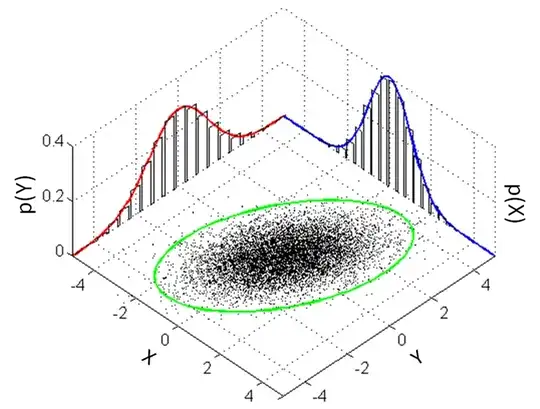The "cyclical symmetry" is referring to the joint probability distribution of $X$ and $Y$, which is a bivariate normal distribution. We won't actually need any details of the distribution or its pdf (if this is something you haven't seen before, it is easy to look up), asides from the important fact that it has rotational symmetry about the origin (see the image below):

(Note: The image just shows a general bivariate normal distribution; in our case, imagine that it is perfectly cylindrically symmetric about the origin.)
Now the condition $Y>0$ means that we are restricting ourselves to the upper half-plane (i.e. the conditional distribution is the same as the image above, but restricted to the upper half plane). The condition that $Y > 3X$ (given that $Y > 0$) means that we want to find the probability that a random point in the $y>0$ half-plane lies in the sector between the line $y = 3x$ and the negative $x$-axis.
But by exploiting the rotational symmetry, this probability is just $\theta/\pi$ where $\theta$ is the angle between the line $y=3x$ and the negative $x$-axis. That is, $P(Y>3X \mid Y>0) = \frac{\frac{\pi}{2} + \arctan(1/3)}{\pi} \approx 0.602$.
I have purposely not been too precise with exactly what the relevant density functions and conditional density functions are, as I believe this is in the spirit of the "geometric" argument that was asked for. Of course, this is all easy to make precise by simply writing down the relevant probability density functions and converting to polar coordinates.
